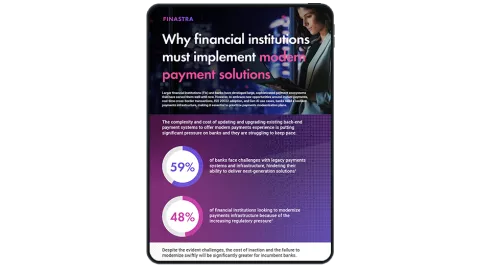The rise of generative artificial intelligence in lending
The banking industry has long been at the forefront of adopting information technology, leveraging it to automate routine tasks, increase transaction volumes, enhance efficiency, and allow professionals to focus on complex activities. While initial AI applications like code generation and loan underwriting are low-risk, scaling AI for intricate bank workflows raises concerns. With AI's evolving capabilities and potential regulatory changes, banks need robust data governance to confidently expand AI use. Overcoming the fear of failure is crucial for banks to embrace AI for advanced processes and reap the benefits of the ongoing AI revolution.

Default Finastra
The banking sector has been one of the earliest adopters of information technology. Even decades ago, banks and credit card companies used executive decision support systems and machine learning to set lending limits for credit cards. In the last 18 months, the AI landscape has advanced in almost everyone’s day-to-day life. In banking, engineers have been able to use AI to write code or transform data at scale in an unprecedented way. As a result, the nuances at scale introduced automation: through all aspects of loan management, from loan underwriting to loan servicing, which can be supported with AI.
Digitization of documents is one of the cornerstone use cases in the banking world. Besides that, AI provides multiple opportunities when it comes to data quality and data management, as well as transforming that data into a risk model downstream, which was traditionally been very manual. Automation is another use case that goes beyond documents and actually transforms the way data itself interacts with other data and also how humans interact with it and take decisions upon.
Furthermore, technology adoption through AI enables a faster and easier modernization process. On the commercial checking side, banks can process and interpret letters of credit by using advanced language models, enabling banks to scale up the transaction volumes and better use their already existing resources. AI also leads to process automation, which ultimately improves efficiency and enhances resiliency.
To remain competitive, financial institutions need to continue to diminish the ‘innovation deficit’ with every other new disruptive technology and need to see past fear, identify early adopters, analyze their use cases, and create a safe space for testing and building out new possible functionalities. Banks need to establish strong data governance models and guardrails to build on earlier projects with confidence, as the regulatory bodies will continue to bring out new restrictions.


